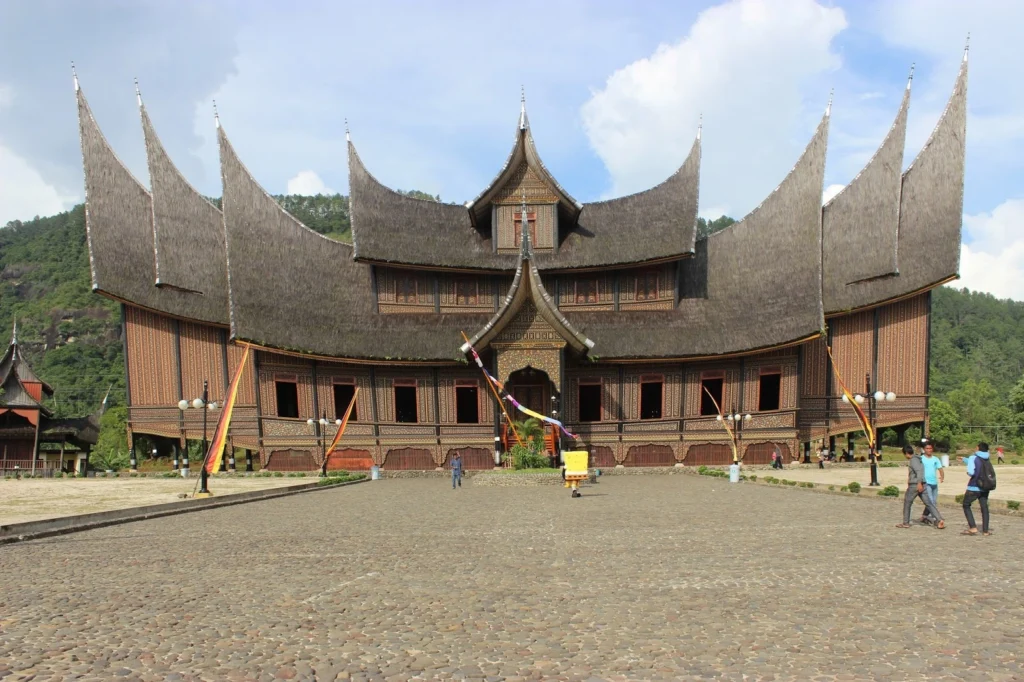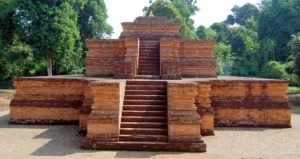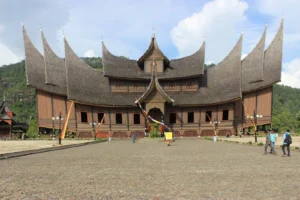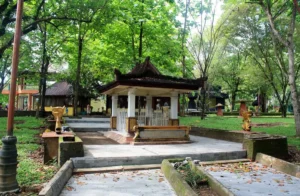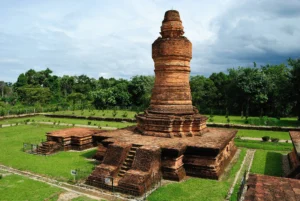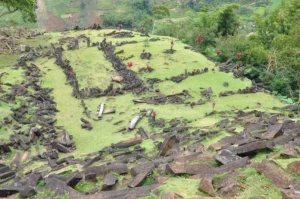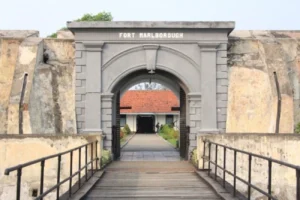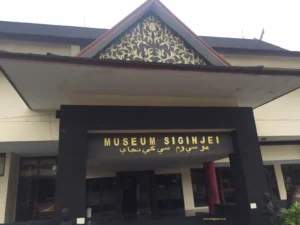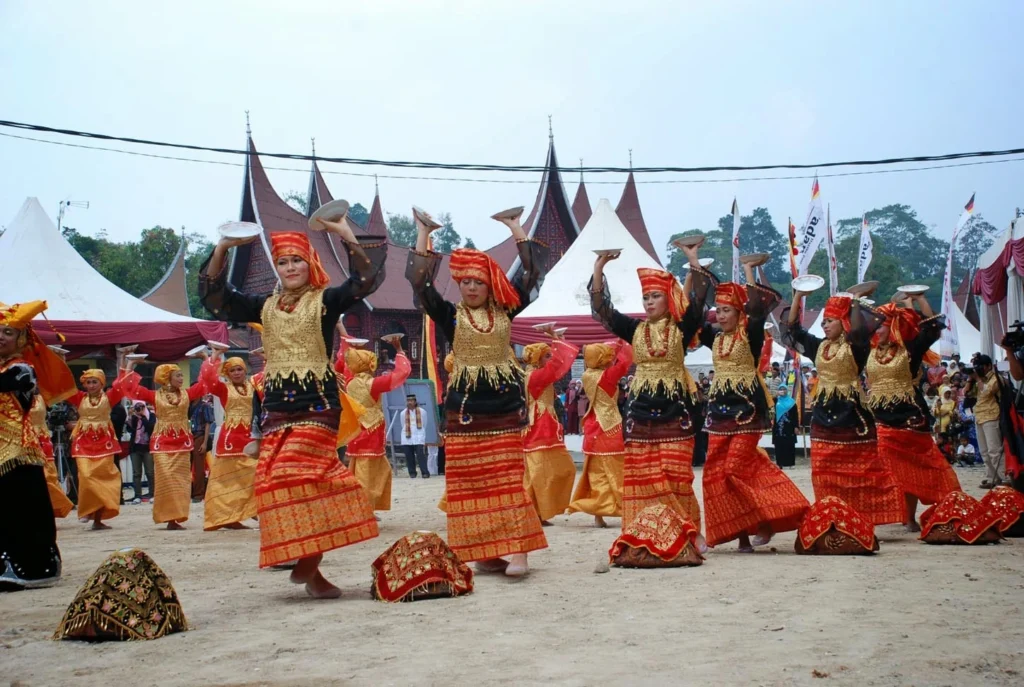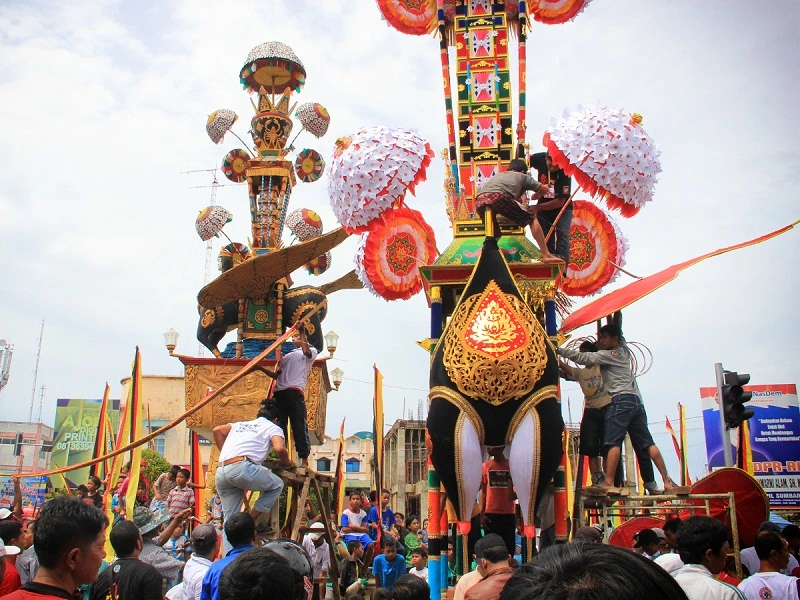Sumatra, an island renowned for its natural beauty, is also a prime destination for Historical Tourism in Sumatra enthusiasts. Hidden behind its lush landscapes lie the remnants of ancient kingdoms and civilizations waiting to be explored. From majestic architecture to historical artifacts, Sumatra silently bears witness to a past rich in stories.
This article will examine eight Historical Tourism in Sumatra spread across different regions of the island. By visiting these places, tourists can enrich their knowledge of the island’s historical heritage, deepen their understanding of the ancient civilizations that thrived there, and directly experience their charm.
Historical tourism in Sumatra is not just a physical journey but also a profound and inspiring experience. Through this exploration, we can understand the values of the past as well as the importance of preserving and understanding Sumatra’s cultural heritage. Thus, each visit to these historical sites becomes not only an adventure but also a valuable spiritual and intellectual journey for visitors. Sumatra truly offers more than just its natural beauty; it also opens the door to an invaluable historical legacy.
8 Sites Historical Tourism in Sumatra
1. Candi Muara Jambi
source : kendhil.com
Historical tourism in Sumatra offers an unforgettable adventure to visitors eager to explore the cultural and historical richness of the island. One of the main destinations is Candi Muara Jambi in the province of Jambi. This temple complex, with over eighty Hindu-Buddhist temple structures, is impressive, bearing witness to the splendor of the Malay Kingdom that reigned from the 7th to the 13th century CE. The majestic architecture and magnificent reliefs of Candi Muara Jambi provide a profound experience of the greatness and power of the Malay Kingdom in the past, thus enriching the understanding of Sumatra’s history.
In addition to Candi Muara Jambi, Sumatra boasts many other historical sites worth visiting. The city of Palembang, a former center of the Srivijaya Kingdom, offers historical sites such as Siguntang Hill and the Sultan Mahmud Badaruddin II Museum. By visiting these places, tourists can deepen their knowledge of Sumatra’s history and culture and understand the rich cultural heritage of Sumatra.
Thus, historical tourism in Sumatra is not just about visiting historical sites but also enriches the soul with the beauty and wisdom of the past. Each historical site in Sumatra has a unique and captivating story, offering an educational and inspiring experience to visitors eager to discover the historical wonders of the island.
2. Kota Pagaruyung
source : amboyindonesia.blogspot.com
The city of Pagaruyung, in the province of West Sumatra, is a major destination in the historical tourism category in Sumatra. As the former administrative center of the Kingdom of Pagaruyung, one of the most important kingdoms in Sumatra from the 14th to the 19th century, this city attracts visitors eager to explore a rich historical heritage.
Pagaruyung showcases various historical remains, including the magnificent replica of the Pagaruyung Palace with its details of traditional Minangkabau architecture. This complex also houses the Adityawarman Museum, where collections of artifacts and cultural remnants from the kingdom’s heyday are displayed.
By visiting Pagaruyung, visitors can deepen their understanding of the social, cultural, and political life of Minangkabau society in the past. The palpable historical atmosphere at every corner of Pagaruyung offers a profound experience to visitors, allowing them to travel through Sumatra’s past in an impressive way.
Thus, Pagaruyung is a historical tourism destination in Sumatra for those who wish to explore the rich historical tourism heritage in Sumatra. Its existence is not limited to being a tourist spot but also an open window to interesting narratives about the past that have shaped Sumatra’s identity and culture.
3. Megalithic Site of Bukit Siguntang
source : holidify.com
4. City of Palembang
source : 1001indonesia.net
Palembang, one of the oldest cities in Indonesia, is a major destination for exploring historical tourism in Sumatra. Its long history includes the golden period of Srivijaya, an influential maritime kingdom from the 7th to the 14th century CE. The city’s historical sites offer visitors the opportunity to delve into Srivijaya’s past glory. The Sultan Mahmud Badaruddin II Museum and Fort Kuto Besak are silent witnesses to this glory, exhibiting precious artifacts and heritage from that era.
However, Palembang’s historical allure does not stop there. Kemaro Island, with its Avalokitesvara Pagoda, is another evidence of Buddhism’s presence during the time of Srivijaya. Its natural beauty also adds to Kemaro Island’s tourist appeal. Exploration in Palembang not only offers a captivating historical experience but also enriches our understanding of Sriwijaya’s important role in Indonesia’s maritime history.
For those wishing to discover Sumatra’s historical richness, Palembang offers an unforgettable adventure. Focusing on historical tourism in Sumatra, this city provides a deep and memorable experience for visitors seeking insights into Indonesia’s glorious past.
5. Megalithic Remains of Padang Lawas
source : traveling-indonesian.blogspot.com
Padang Lawas, a historical tourist destination in North Sumatra, showcases the wealth of fascinating megalithic remains. Known for its numerous prehistoric sites, Padang Lawas offers a profound experience to visitors interested in ancient history and culture. Renowned megalithic sites such as the stone throne of King Siallagan and Hoda Rock are silent witnesses to the glorious past.
The intricately carved giant rocks reinforce the presence of ancient societies, particularly the Batak, in the region. By visiting Padang Lawas, visitors can immerse themselves in the stories engraved in these imposing stones and feel the spiritual aura and local wisdom that have existed since prehistory.
Historical tourism in Sumatra is enriched by the presence of Padang Lawas as one of the main destinations. Visitors can understand and appreciate Indonesia’s rich and diverse cultural heritage. By delving deeper into Padang Lawas’s megalithic history, we can enrich our knowledge of Sumatra’s ancient civilizations and observe the diversity of human life in the past.
6. City of Bengkulu
source : wisatakita.com
La ville de Bengkulu, située sur la côte ouest de l’île de Sumatra, offre une expérience Historical Tourism in Sumatra. L’une de ses attractions principales est le fort de Marlborough, un monument imposant construit par les Anglais au XVIIIe siècle. Ce fort n’est pas seulement une structure physique, mais aussi le témoin silencieux du parcours historique de cette ville, reflétant l’ère coloniale qui a influencé de manière significative le développement de Bengkulu. Les touristes peuvent ressentir le charme et l’admiration pour la beauté de son architecture et son histoire, ajoutant ainsi de la profondeur à leur expérience d’exploration Historical Tourism in Sumatra.
Outre le fort de Marlborough, le musée de Bengkulu est également une destination incontournable pour les passionnés d’histoire. Ce musée expose une collection d’artefacts et d’objets historiques de l’époque coloniale néerlandaise, offrant ainsi un aperçu approfondi des périodes importantes de l’histoire de Sumatra. Les visiteurs peuvent mieux comprendre les interactions entre la culture européenne et locale, ainsi que leur impact sur le développement de la région.
De plus, aux alentours de la ville de Bengkulu, les touristes peuvent également découvrir des vestiges archéologiques fascinants. Des sites préhistoriques et des tombes anciennes parsèment la région, offrant une expérience d’exploration intéressante pour les amateurs d’histoire. La présence de ces sites est une preuve évidente de la richesse et de la diversité Historical Tourism in Sumatra, ravivant ainsi des récits inestimables du passé.
Ainsi, un voyage Historical Tourism in Sumatra ne serait pas complet sans visiter la ville de Bengkulu et explorer ses héritages fascinants. Cette ville n’est pas seulement un centre historique important, mais aussi un lieu où les visiteurs peuvent ressentir directement le toucher d’un passé riche en récits et en inspirations. Chaque coin de la ville de Bengkulu recèle des merveilles et une richesse historique qui attendent d’être révélées aux visiteurs courageux qui osent les explorer.
7. Megalithic Site of Sei Buatan
The megalithic site of Sei Buatan, located in the province of Riau, is an important destination for historical tourism in Sumatra. Amidst its natural beauty, this site offers visitors a captivating experience with various giant stone structures considered remnants of ancient societies. The presence of this site reflects the rich and intriguing heritage of historical tourism in Sumatra, arousing curiosity about the past.
Although much remains to be discovered about the significance and actual function of these stone structures, their very presence is evidence of the ancient societies that inhabited the Riau region thousands of years ago. This indicates the complexity of the history and culture that have shaped the identity and development of this region for centuries.
For history and archaeology enthusiasts, a visit to the megalithic site of Sei Buatan is not only a physical journey through time but also a spiritual and intellectual journey. Here, visitors can reflect on humanity’s long journey in Sumatra and explore the ongoing connection between the present and the past. Thus, this site is an important marker in the exploration of the rich and captivating historical tourism in Sumatra.
8. City of Jambi
source: ciwir.blogspot.com
The city of Jambi, the capital of Jambi province, is a destination rich in historical heritage, offering visitors a captivating experience to explore traces of the past. One of the most remarkable historical sites in the city of Jambi is the Muara Jambi temple complex. This complex is an important relic of the past, illustrating the grandeur of the civilization that existed in the region. Historical tourism in Sumatra is incomplete without a visit to this impressive temple complex.
The Muara Jambi temple complex provides an impressive view of the life and beliefs of people from the past. Visitors can explore the majestic temple ruins, examine reliefs telling interesting stories, and contemplate the cultural greatness that once existed here. The presence of this temple complex also reflects the significance of the city of Jambi as one of the centers of spiritual and religious activity in Sumatra’s past.
In addition to the Muara Jambi temple complex, visitors can also explore the historical richness of the city of Jambi through the Jambi State Museum. This museum displays various artifacts and historical objects that offer a comprehensive insight into the history, culture, and life of people in the Sumatra region. By visiting this museum, tourists can deepen their understanding of the role of the city of Jambi in the development of historical tourism in Sumatra.
A trip to the city of Jambi not only satisfies historical curiosity but also enriches tourists’ experience with the beauty of nature and the hospitality of local residents. With careful exploration, visitors can delve deeper into the layers of hidden history behind the natural beauty and urban life. Thus, for those interested in historical tourism in Sumatra, the city of Jambi is a destination not to be missed.
Tips for Visiting Sites Historical Tourism in Sumatra
Visiting Historical Tourism in Sumatra is a captivating and enriching experience. Here are some tips that can help you enjoy your journey:
-
Plan well: Before setting out, devise a well-detailed travel plan including the places you wish to visit, available time, as well as necessary transportation and accommodation.
-
Learn the history: To make your experience more meaningful, take the time to learn the history of each place you will visit. This will help you appreciate the cultural and historical richness you will discover.
-
Dress appropriately: Some historical sites may have rules regarding appropriate attire. Make sure to wear decent and comfortable clothing for your movement.
-
Engage a tour guide: Having a local guide can be very helpful in deepening your understanding of local history and culture. They can also provide insights and interesting stories not found in guidebooks.
-
Respect historical sites: It is important to always respect the historical sites you visit. Keep them clean, do not damage anything, and follow the rules in place.
-
Bring necessary equipment: Make sure to bring necessary equipment such as a camera to capture precious moments, a water bottle, and other equipment you may need.
-
Ensure your health and safety: Always prioritize your health and safety when exploring historical sites. Remember to bring any necessary medications, especially if you have particular health issues.
-
Appreciate local culture: Interact with local residents with respect and curiosity. This will enrich your experience and give you a better understanding of daily life and local culture.
-
Taste local cuisine: Do not miss the opportunity to taste typical dishes of the region. Cuisine is also an integral part of a place’s cultural heritage.
-
Bring back souvenirs: To remember your experience, purchase some local souvenirs as mementos. This can also be a way to support the local economy.
-
Do not forget nature: In addition to historical sites, Sumatra also boasts extraordinary natural beauty. Take the opportunity to explore its nature as well.
By following these tips, you can explore Historical Tourism in Sumatra in a more enjoyable and meaningful way. Happy travels!
Conclusion
Exploring the traces of ancient empires and civilizations in Sumatra is not just a physical journey but also a journey through time. In this journey, we are presented with captivating beauty and historical richness for enthusiasts of historical tourism in Sumatra. From Candi Muara Jambi to the city of Jambi, this island offers an unforgettable experience for those who want to explore the richness of cultural and historical heritage.
Not only that, the opportunity to understand the historical richness of Sumatra can also be found in many other places such as the Malay Kingdom Miniature Park in Sungai Batang, which showcases models of characteristic buildings of the Malay kingdom as well as other historical artifacts.
Thus, through this journey, we can explore the traces of ancient empires and civilizations hidden in the beautiful land of Sumatra. Each Historical Tourism in Sumatra brings a unique and fascinating history to explore, bringing past greatness back to life and offering new perspectives on the island’s cultural heritage. For history and culture enthusiasts, Sumatra is a must-visit destination on their travel list. Plan your trip to Sumatra now with Salut Bali, which is ready to help and accompany you during your vacation to enjoy historical tourism in Sumatra.

